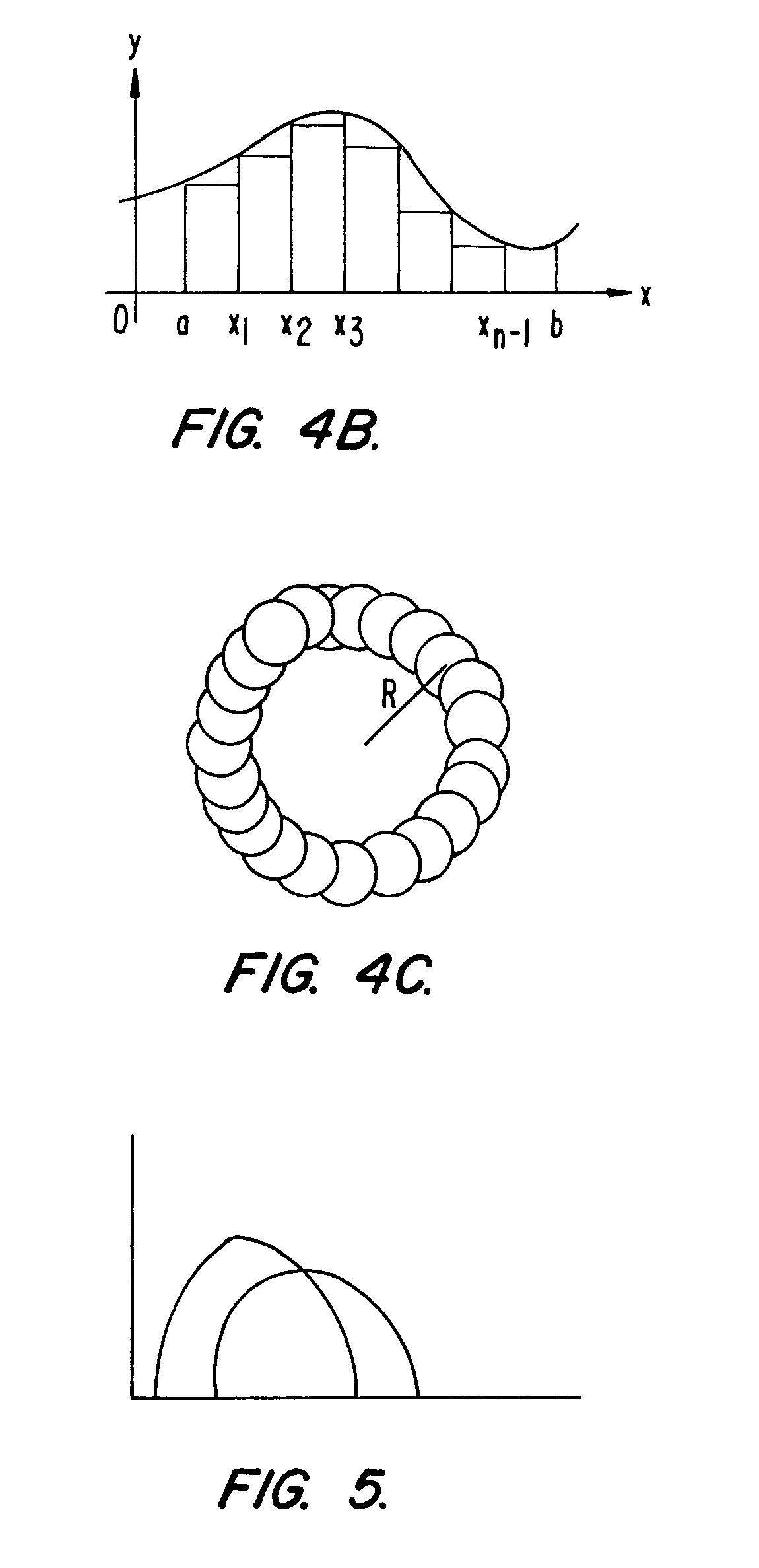Generating scanning spot locations for laser eye surgery
a laser eye surgery and laser beam technology, applied in the field of tissue removal techniques, can solve the problems of large processing time, small spot scanners with their problems, and high processing costs, and achieve the effect of simplifying overlap analysis
- Summary
- Abstract
- Description
- Claims
- Application Information
AI Technical Summary
Benefits of technology
Problems solved by technology
Method used
Image
Examples
Embodiment Construction
I. GENERATION OF SCANNING LOCATIONS AND DEPTHS
[0048]A. Treatment Space
[0049]Treatment space or profile is the treated form (or profile) created by a given spatial pulse sequence taking into account its overlap characteristics.
[0050]1. Rectangular Spot Shape in Straight Pattern
[0051]As an introductory example, a simple square spot with a treatment intensity of approximately 0.25 μm per pulse is used. The overlap is set to 33%. A 1 mm square spot centered at position (in mm) [0, 0] will have the next spot at [0, 0.33]. The area the two pulses have in common is 0.67 mm2. The offset (step size) from the first pulse is 0.33 mm. Continuing this sequence for a total of N pulses will produce a treated path of width 1 mm, and length 0.33*N mm. The overlap is 33% so the last pulse to coincide with the first pulse is the third pulse. The fourth pulse's edge is immediately adjacent to the first pulse. Assuming that the positioning is perfect, they will share a common edge. Looking in from a mer...
PUM
 Login to View More
Login to View More Abstract
Description
Claims
Application Information
 Login to View More
Login to View More - R&D
- Intellectual Property
- Life Sciences
- Materials
- Tech Scout
- Unparalleled Data Quality
- Higher Quality Content
- 60% Fewer Hallucinations
Browse by: Latest US Patents, China's latest patents, Technical Efficacy Thesaurus, Application Domain, Technology Topic, Popular Technical Reports.
© 2025 PatSnap. All rights reserved.Legal|Privacy policy|Modern Slavery Act Transparency Statement|Sitemap|About US| Contact US: help@patsnap.com



